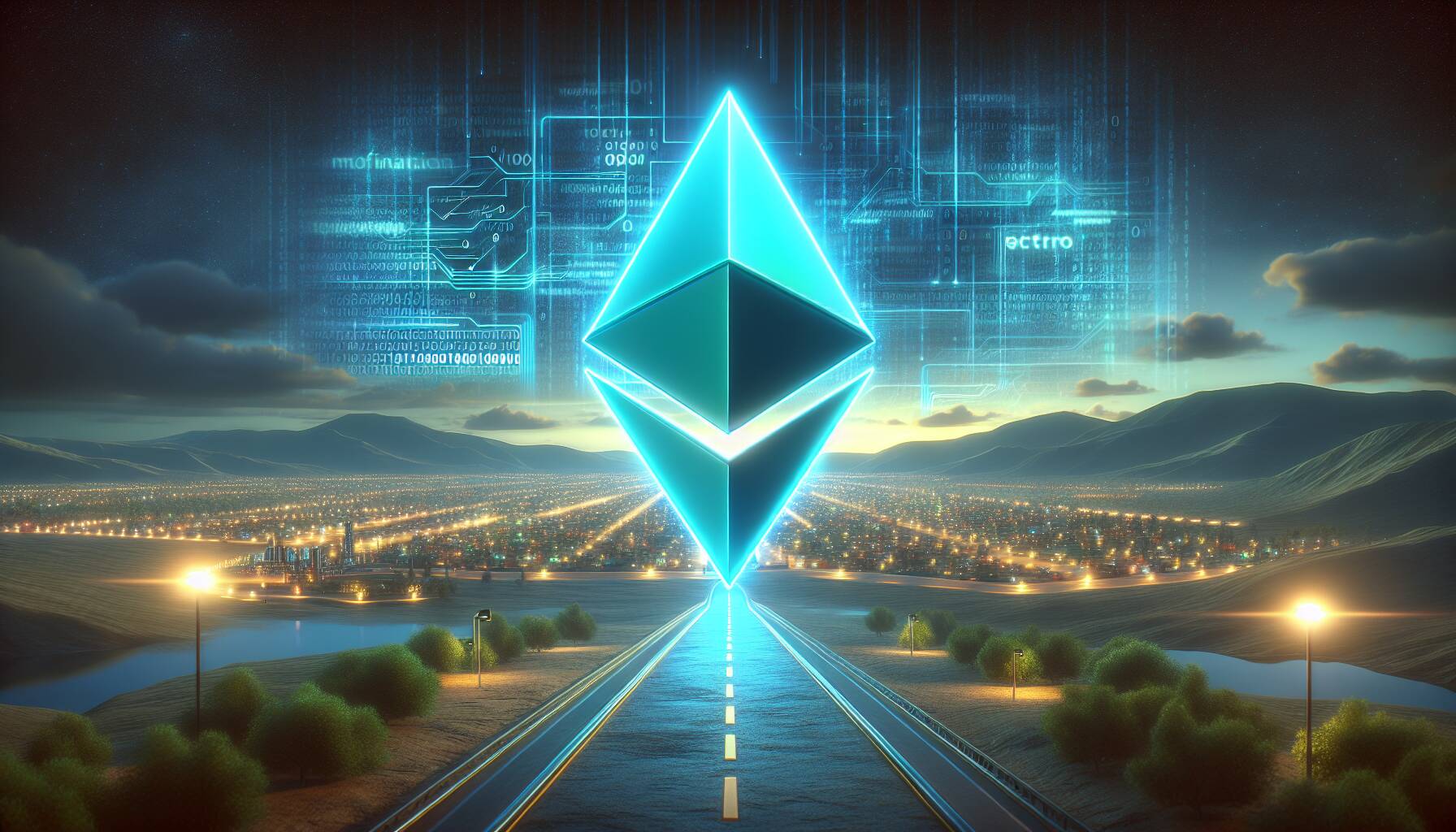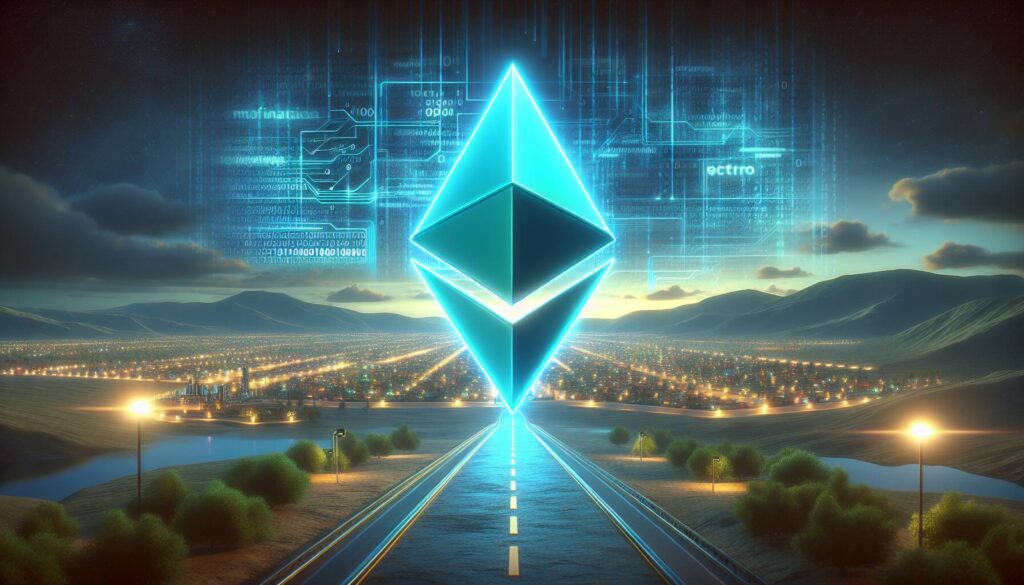Ethereum’s journey toward its highly anticipated Pectra upgrade has taken a turn as core developers announced the launch of a new test network named Hooli. Following two unsuccessful attempts to test Pectra on the existing test networks, Sepolia and Holesky, the developers deemed it necessary to create Hooli. This new platform will be used to finalize the code update before it goes live on the Ethereum main network.
“A new testnet, Hooli, is going live Monday to wrap up Pectra testing,” said Tim Beiko, who oversees the Ethereum Foundation’s ecosystem developments, in a recent post on social media.
Pectra is designed to enhance Ethereum’s capabilities, making the blockchain faster and more user-friendly by introducing several significant code changes. One noteworthy feature is the addition of “smart contract” functionality to user addresses, which could allow wallets to pay transaction fees in various currencies other than ETH. The upcoming tests on Hooli are set for Wednesday, March 26, with data on performance and stability anticipated shortly thereafter.
Beiko mentioned in his post that, if the Hooli test yields positive results, the Pectra upgrade could reach Ethereum’s main network within approximately 30 days. This timeline places a potential launch around late April or early May. However, the recent technical hiccups during the Pectra tests have raised concerns in the crypto community, particularly as Ethereum faces pressure from declining ETH prices and leadership shifts within the Ethereum Foundation.
“If you need to test validator exits, be on the lookout for [Hooli]! Everything else can be tested on Sepolia & Holesky,” Beiko noted.
The challenges with the previous tests underscore the importance of these preparatory networks. Any major disruption on the Ethereum main network could have significant financial implications, making the testing phase critical. As Ethereum navigates this delicate landscape, the successful implementation of Pectra is seen as vital for bolstering confidence in its future and competitive stance against rising blockchains like Solana.

Ethereum’s Pectra Upgrade and Its Implications
The upcoming Pectra upgrade for Ethereum is significant, not just for developers but also for users of the network. Here are the key points regarding the Pectra upgrade and its potential impact:
- New Testnet Launch:
- Hooli testnet will go live on Monday for final Pectra testing.
- This testnet is created to overcome previous complications faced by Sepolia and Holesky.
- Upgrades for Performance and User Experience:
- Pectra aims to make Ethereum faster and more efficient.
- New smart contract functionality allows user wallets to program various features.
- Users may pay transaction fees in currencies other than ETH, broadening payment options.
- Testing Timeline:
- If successful, Pectra could launch on the main network by late April or early May.
- The Hooli test on March 26 will play a critical role in determining the upgrade’s stability.
- Importance of Successful Implementation:
- Success may restore confidence in Ethereum’s capabilities amidst evolving competition.
- The upgrade is seen as vital for maintaining Ethereum’s market position against newer blockchains.
- Financial and Operational Risks:
- Previous test networks faced configuration errors causing prolonged downtime, highlighting the stakes involved.
- Disruptions on the main Ethereum network could lead to substantial financial losses.
“Major upgrades typically undergo testing on networks like Hooli before deployment to avoid costly disruptions on the mainnet.”
These developments in Ethereum’s network can directly impact users and developers by enhancing transaction efficiency and user experience. With the introduction of flexibility in fee payments and improved functionalities, Ethereum aims to strengthen its ecosystem amid competitive pressures.
Ethereum’s Pectra Upgrade: Challenges and Opportunities Compared
The Ethereum network is currently navigating through a crucial phase with the impending launch of its Pectra upgrade, which has already encountered significant difficulties. Following problematic trials on the existing test networks, Sepolia and Holesky, the developers opted to introduce a new testnet, Hooli, to ensure a thorough evaluation before the upgrade goes live. This decision reflects Ethereum’s determination to deliver a robust update that significantly enhances the user experience while running parallel to ongoing challenges faced in the blockchain arena.
Competitive Advantages: The Pectra upgrade promises notable advancements, including improved speed and efficiency, which could give Ethereum a competitive edge over leading rivals such as Solana and Cardano. The capacity to pay transaction fees in multiple currencies also positions Ethereum to attract a wider audience, including those who may not hold ETH. If successful, the upgrade could bolster user confidence and reinvigorate the ecosystem amidst deterrents such as falling ETH prices and challenges with leadership stability at the Ethereum Foundation. Hooli’s focused testing schedule, set to commence shortly, offers a fresh opportunity to validate these enhancements in a controlled environment.
Disadvantages and Potential Pitfalls: However, the introduction of the Hooli testnet arises from prior failures on Sepolia and Holesky, highlighting potential vulnerabilities within Ethereum’s development processes. Failure to ensure a smooth testing phase with Hooli could lead to delays in the full deployment of Pectra, further aggravating investor anxieties and risking Ethereum’s standing within the competitive landscape of blockchain technology. With Solana’s growing capabilities and other emerging networks, any setbacks could mean lost ground in an already fiercely contested domain.
This situation creates a dual-edged impact: while developers and tech-savvy users may benefit from the enhanced features the Pectra upgrade promises, casual users could find themselves troubled by the ongoing instability. Additionally, Ethereum’s reliance on test networks places significant pressure on those like Holesky and Sepolia, which must now successfully implement the desired changes without further issues. If the issues encountered with previous tests persist, it may dissuade new investors and developers from engaging with Ethereum, which is an unavoidable risk that echoes throughout the blockchain landscape.
As ETH grapples with these testnet challenges, observers and stakeholders will be keenly watching the outcomes of the Hooli tests. The stakes are high, and the future trajectory of Ethereum hangs in the balance as it seeks to refine its technological offerings amid ever-evolving market dynamics.

















